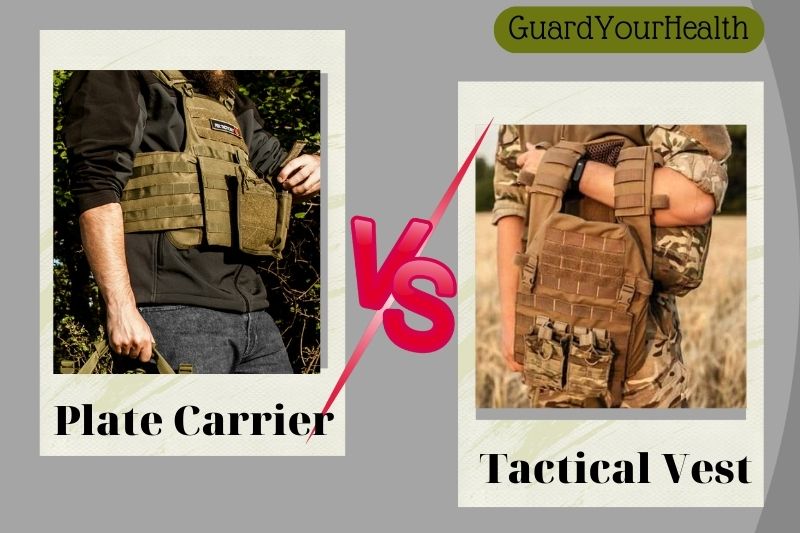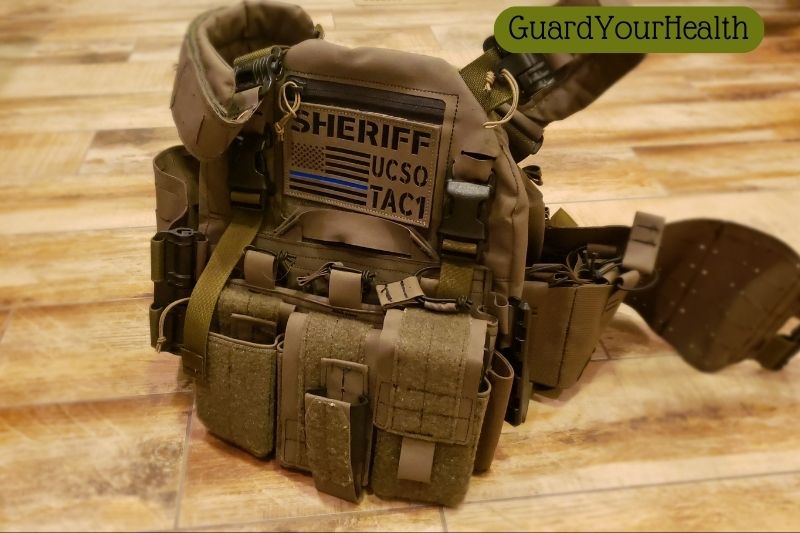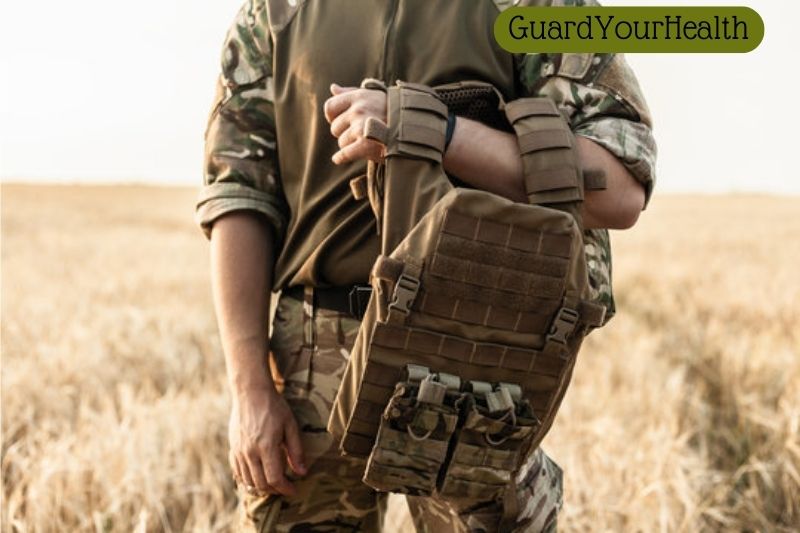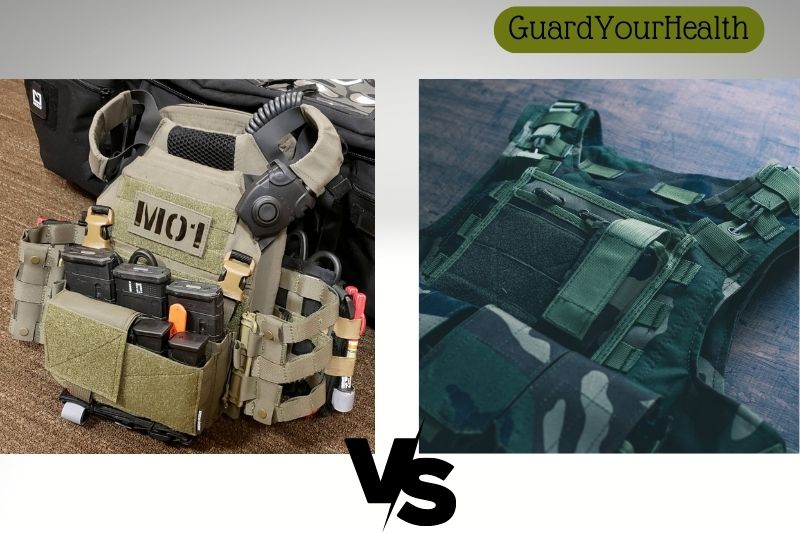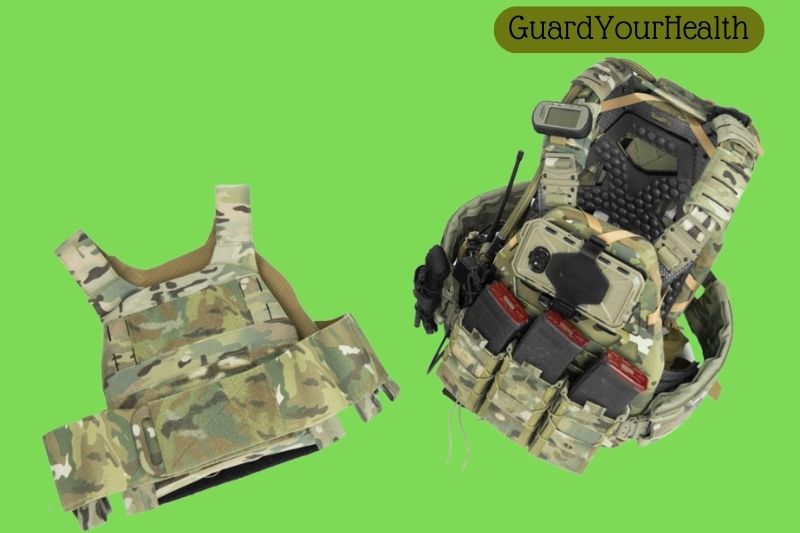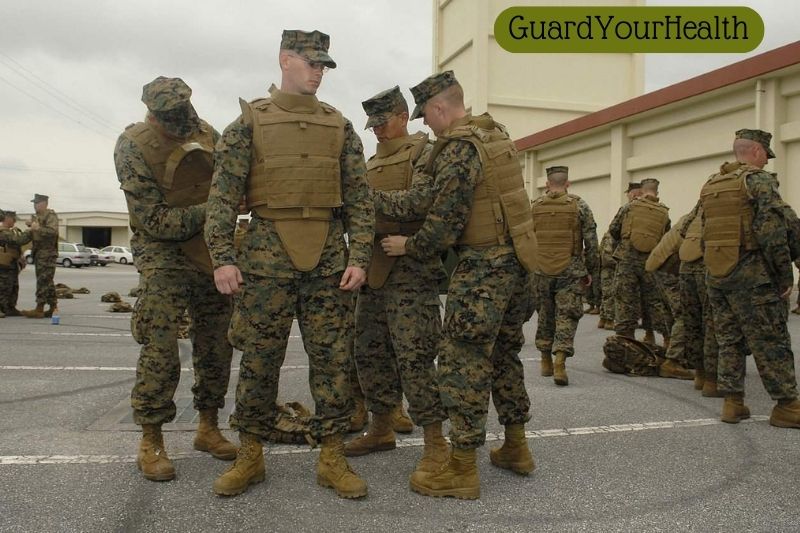There are a lot of different options out there when it comes to body armor. It can be overwhelming trying to decide what is best for you. In this blog post, we will be discussing plate carriers and vests. GuardYourHealth will go over the features of each so that you can make an informed decision on which is best for you.
Let’s start.
What is a Plate Carrier?
As the name suggests, a plate carrier carries a plate to deflect rifle bullets. Imagine how much heavier these items will get if you add additional equipment to them. The benefit of these plate carriers is that they can spread the weight across your entire body by taking part of the pressure off your pistol belt.
Both police officers and military people utilize these carriers on the battlefield every day. These carriers frequently match up with traditional carriers for bulletproof vests, allowing you to switch them out with your ballistic panels.
To guarantee that your ceramic plates are always loaded during active shooter situations, several agencies offer a separate plate carrier.
Plate carriers come in a variety of varieties. One of them is a concealable plate carrier that enables you to blend in and be as discrete as you can. Kevlar plate carriers can deflect impact and withstand heat. Because Kevlar is stretchy, these plate carriers can deflect a bullet.
The distinctive quality of plate carriers is the abundance of pouches and MOLLE slots for attaching necessary equipment, such as rifle magazines and tasers.
Making sure they won’t get in the way when you draw your weapon is the key to loading your gear in these areas. When adding objects to the carrier, it’s imperative to keep snagging risks in mind as well.
What is a Tactical Vest?
Anybody can wear a tactical vest; they are no longer just for hikers and SWAT squads. These vests are still used by the military today for specialized work. Particularly for reconnaissance missions where the military must be swift and light, these vests are used.
Typically, the front of these tactical vests has a zipper to make putting them on and taking them off simple. They feature MOLLE or pouches to hold all necessary things, like flashlights, knives, and rifle magazines. The vest’s pockets and compartments are all firmly fastened to it so they won’t readily come off.
Flexible tactical vests come in a variety of designs and materials. Some even have a front pouch to keep the holster on the weak side when worn; others are even made specifically for paintball players.
The tactical vest lacks the safety that other vest solutions give, but it does enable secure storage for your equipment in dangerous or time-sensitive scenarios.
- Read full or post: how to set up tactical vest
Plate Carrier Vs Bulletproof Vest
Easy to Wear
Given that they include zippers, tactical vests are simpler to put on and take off when you’re in a hurry. These zippers, however, prevent you from inserting anything in the middle. Although plate carriers are more challenging to put on and take off, they have a cummerbund and adjustable straps for a more secure fit.
Weight
Plate carriers obviously weigh more than tactical vests, but the added weight provides superior protection. These carriers’ ballistic panels can aid in bullet repulsion. Tactical vests, on the other hand, are lighter, making them ideal for situations where you need to move quickly.
MOLLE
Modular Lightweight Load-Carrying Equipment is another name for the pouches and compartments that you might use to carry mission-critical supplies. Although MOLLE is not required for vests, it is a crucial component of plate carriers.
You may carry vital items, such as a first aid kit and rifle magazines, with the aid of these pouches and compartments.
Simple fabric vests with armor plates on the front and rear makeup plate carriers.
For optimal protection, the armor plate can be made of steel, ceramic, or polyethylene.
On the other hand, vests can be made of breathable fabric material and do not have these plates to stop the bullet.
Protection Levels
Protecting yourself from potential attacks is the fundamental goal of wearing body armor. As a result, it’s critical that you comprehend the various protective levels of body armor as well as the various hazard levels you may encounter. There are huge distinctions between plate carriers and bulletproof vests in terms of quality of protection.
As was already said, bulletproof vests fall under the category of soft body armor. From Level IIA through Level IIIA, threats are dealt with by them. The majority of the firepower in these levels comes from pistols and handguns. The least protective bulletproof vests are Level II.
They will stop bullets like the.40 S&W FMJ (Smith & Wesson) and the 9mm FMJ (Full Metal Jacket). Bulletproof vests of level II will provide defense against projectiles like the.357 Magnum JSP (Jacketed Soft Point). When it comes to bullets like the.357 SIG FMJ FN (Flat Nose) and the.44 Mag SJHP, Level IIIA, offers adequate protection (Semi-Jacketed Hollow Point).
However, when they contain ballistic plates, plate carriers are only classified as belonging to a certain level of protection. The level of protection is determined by the ballistic plates. Plate carriers are designed to make it simple for you to select the level of protection you require.
Different ballistic plates with varying levels of protection can be used on the same plate carrier. Each plate carrier, however, is made particularly to be used with a certain variety of ballistic plates. To make sure you acquire the correct carrier rig for the correct ballistic plates, you must thoroughly inspect the product before purchasing.
Hard body armor is typically categorized as ballistic plates. They’ll typically be at threat levels III or IV. Polyethylene (PE) material, steel, or ceramic are all acceptable materials for armor plates. The best plates are made of PE because they are the most protective and lightest. Although they are heavy, steel and ceramic are also quite protective.
While level IV ballistic plates will shield you from 30.06 M2 AP (Armor Piercing) rounds, level III ballistic plates will protect you from gunfire, such as 7.62 mm FMJ steel jacketed bullets.
This is incredibly deadly gunfire, and if you were to get shot, your odds of surviving would be quite poor. As a result, it may be claimed that plate carriers are preferable if you are dealing with a high level of ballistic threat. Keep in mind that without ballistic plates, carrier plates cannot be classified as having any level of protection.
They are not resistant to bullets. After going through the defensive details of both plate carriers and bulletproof vests, let’s discuss why you might prefer one over the other.
- Read our comparison for full of information: level 3 vs level 4 body armor
Weighted Vest Vs Plate Carrier: Which One Should You Choose?
There is no clear-cut answer when it comes to deciding between a plate carrier and a vest. Both have their own advantages and disadvantages that need to be considered before making a decision.
Plate carriers are typically more expensive than vests but offer better protection against high-powered rifle rounds. Vests are less expensive and can be more comfortable to wear for long periods, but they offer less protection against bullets.
Ultimately, the decision between a plate carrier and a vest depends on the specific needs of the individual.
FAQs
What Are Plate Carriers Made Of?
Armor plates are attached to regular cloth vests called plate carriers at the front and back. The armor plate can be made of steel, ceramic, or polyethylene for optimal protection.
How Much Does A Plate Carrier Cost?
Hard-working plate carriers costing between $250 and $600 are available. They’ll be made of strong materials and include cutting-edge features. The majority of carriers available fall into this category; examples from our list include the JPC, Strandhogg, and Plate frame.
Is A Tactical Vest Bulletproof?
Although tactical vests offer Level IIIA protection, they also feature the adaptability of Plate Carrier plate pockets for additional hard armor plates, making them identical to normal Bullet Proof Vests.
Verdict
There are many different types of body armor available on the market, but two of the most popular are plate carriers and vests. Plate carriers are designed to protect the wearer’s vital organs, while vests provide protection for the entire body. Both have their own advantages and disadvantages, so it’s important to choose the right one for your needs.

